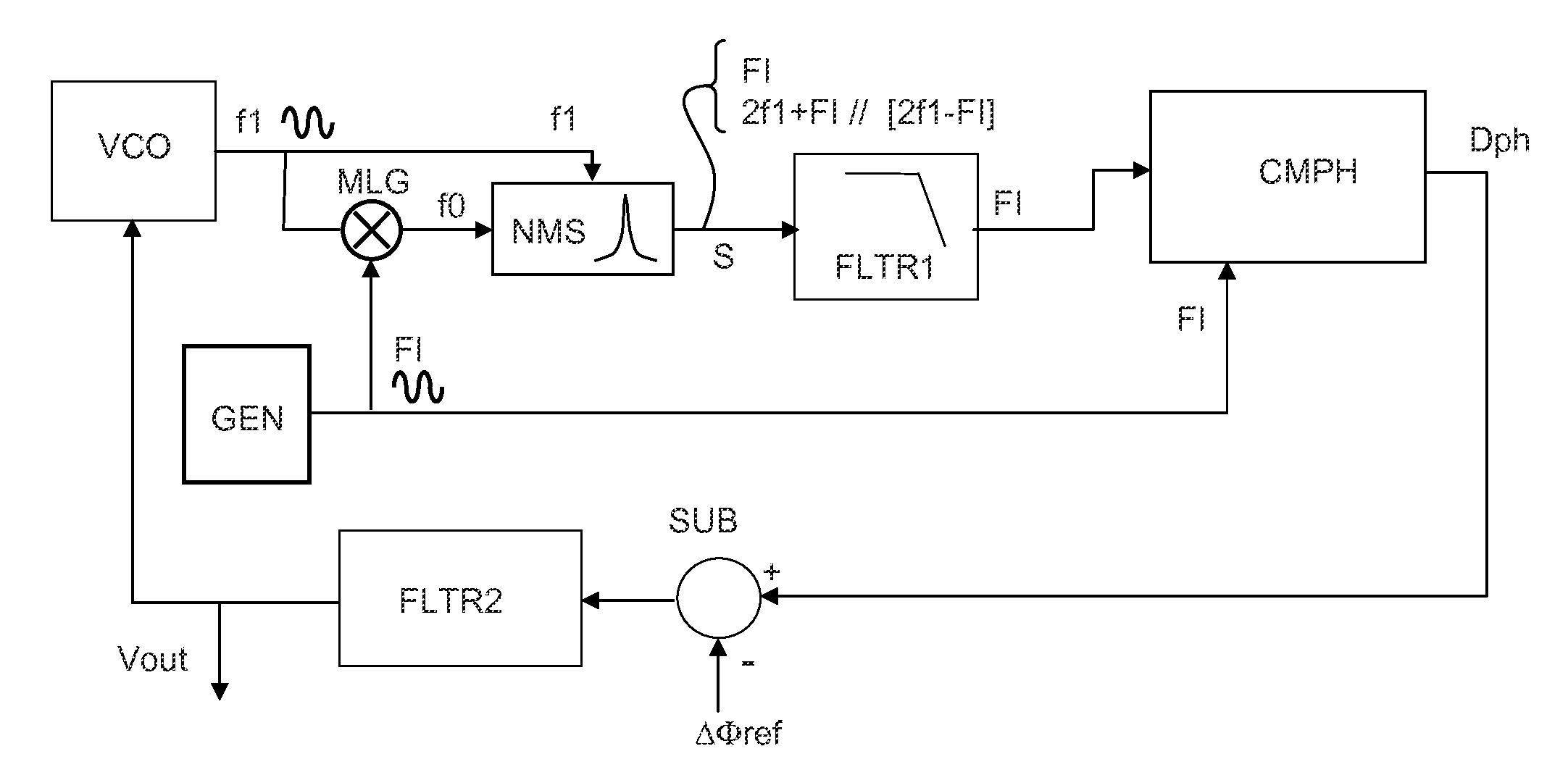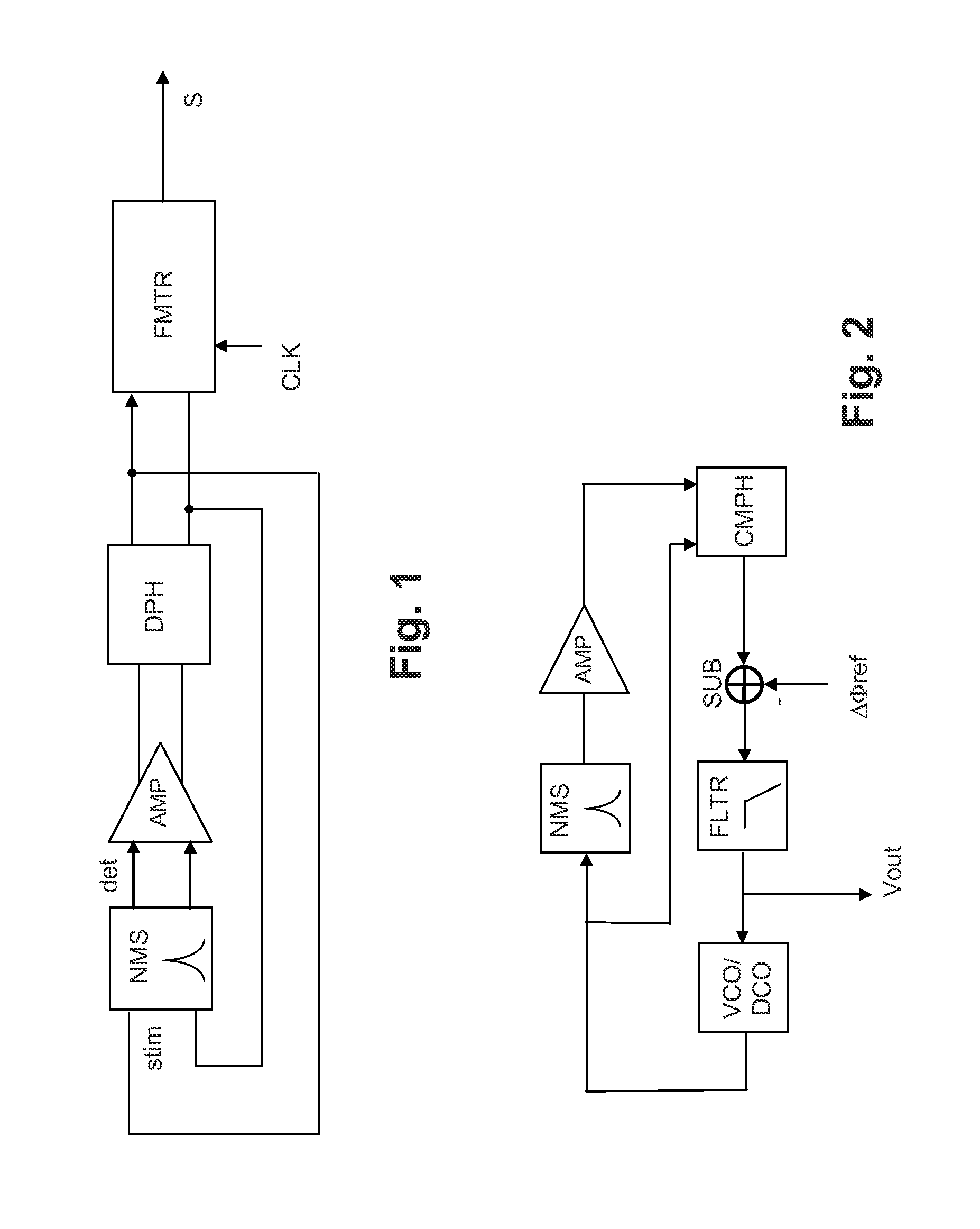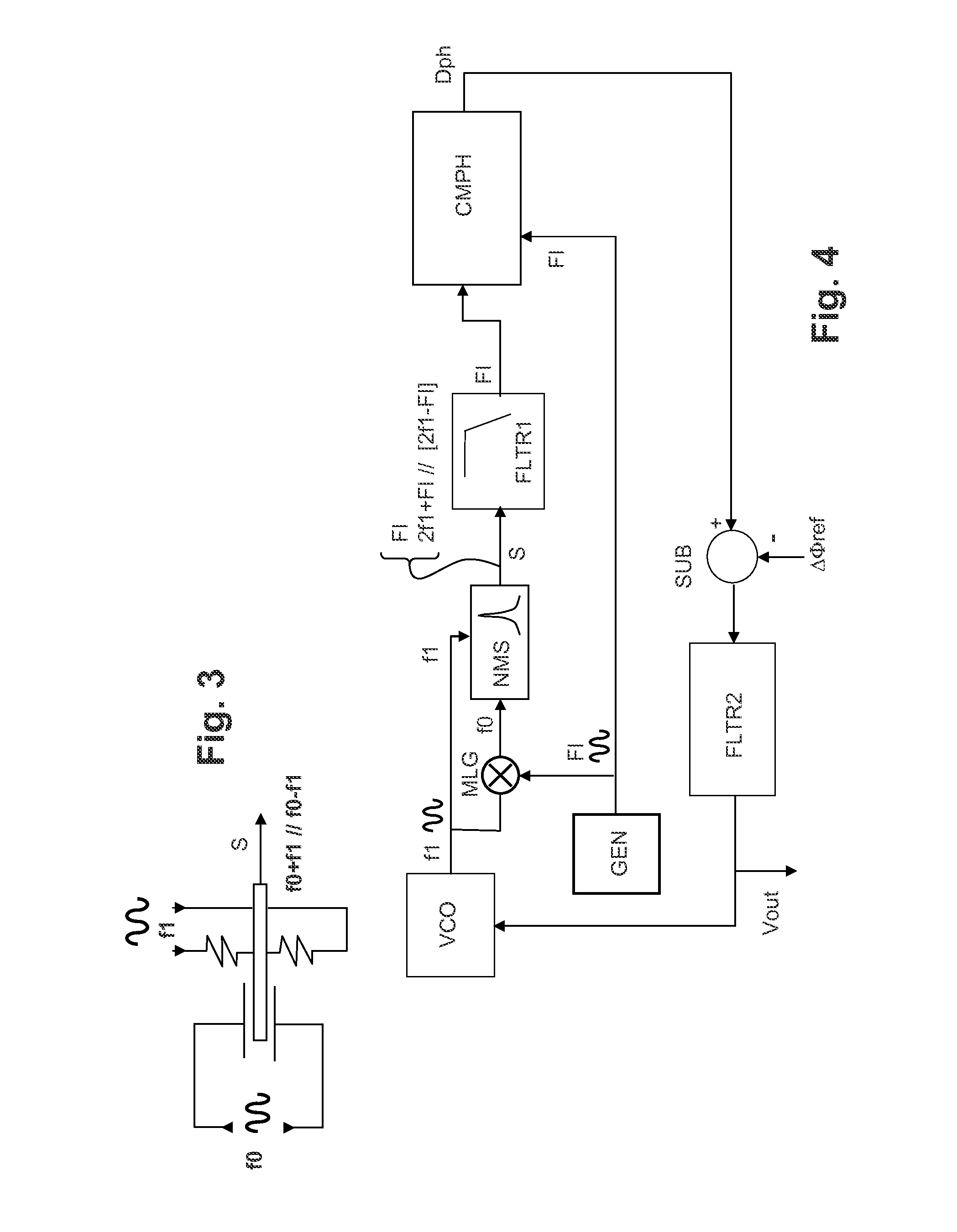Circuit for measuring the resonant frequency of nanoresonators
a nano-resonator and resonator technology, applied in the direction of sonic/ultrasonic/infrasonic wave material analysis, automatic control of pulses, etc., can solve the problem of bulk on the surface of the integrated circuit and corresponding costs, difficult to ensure a priori that the gain and phase conditions will be obtained that allow for spontaneous natural oscillation at the resonant frequency, etc. problem, to achieve the effect of reducing the necessary energy and power consumption resour
- Summary
- Abstract
- Description
- Claims
- Application Information
AI Technical Summary
Benefits of technology
Problems solved by technology
Method used
Image
Examples
Embodiment Construction
[0033]The nanoresonator used in the measurement circuit according to the invention is of the following type, whatever its practical embodiment: it possesses a vibration excitation input for receiving an actuation signal at an excitation frequency (f0), a polarization input for receiving a polarization signal having an AC component at a polarization frequency (f1), and finally an output for supplying an electrical signal representing the vibration of the nanoresonator. The polarization frequency serves to modulate the output signal to facilitate the measurement. The output signal, modulated by the polarization signal, comprises a component at an intermediate frequency which is the difference between the excitation frequency and the polarization frequency, as well as a component at a frequency that is the sum of these two frequencies. It is to this type of nanoresonator that the present invention generally applies. The component at the sum frequency will be eliminated by filtering. Th...
PUM
 Login to View More
Login to View More Abstract
Description
Claims
Application Information
 Login to View More
Login to View More - R&D
- Intellectual Property
- Life Sciences
- Materials
- Tech Scout
- Unparalleled Data Quality
- Higher Quality Content
- 60% Fewer Hallucinations
Browse by: Latest US Patents, China's latest patents, Technical Efficacy Thesaurus, Application Domain, Technology Topic, Popular Technical Reports.
© 2025 PatSnap. All rights reserved.Legal|Privacy policy|Modern Slavery Act Transparency Statement|Sitemap|About US| Contact US: help@patsnap.com



